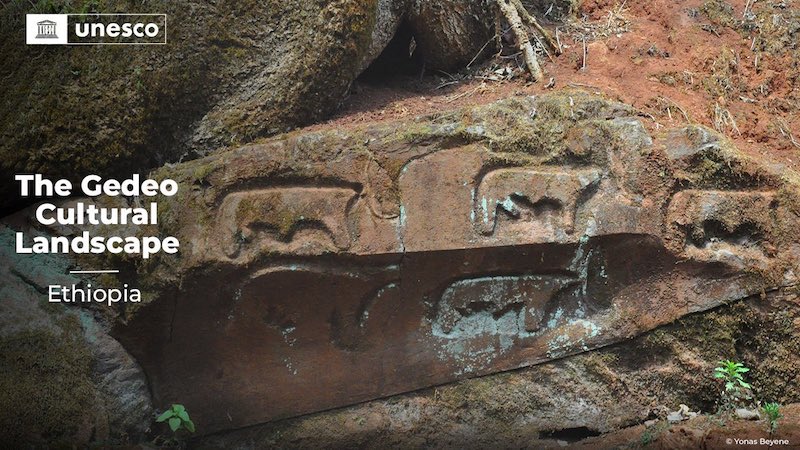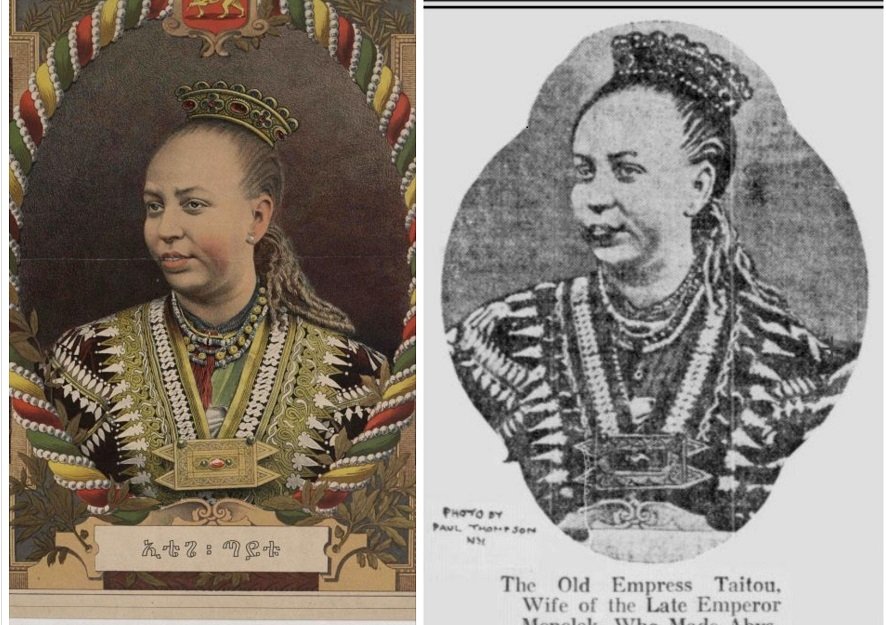Wonderful news from the 45th Session of the UNESCO World Heritage Committee
that Ethiopia has gained two new inscriptions: Gedeo Cultural Landscape (2022) and Bale
Mountains National Park (2023).
The Gedeo Cultural Landscape lies along the eastern edge of the Main
Ethiopian Rift, on the steep escarpments of the Ethiopian highlands. An
area of agroforestry, it utilizes multilayer cultivation with large trees
sheltering indigenous enset, the main food crop, under which grow
coffee and other shrubs. The area is densely populated by the Gedeo
people whose traditional knowledge supports local forest management.
Within the cultivated mountain slopes are sacred forests traditionally
used by local communities for rituals associated with the Gedeo religion,
and along the mountain ridges are dense clusters of megalithic
monuments, which came to be revered by the Gedeo and cared for by
their elders.
Sources: @Landoforigins and UNESCO
BALE MOUNTAINS NATIONAL PARK
Bale Mountains National Park has also been inscribed as a UNESCO Natural World Heritage Site, making it the second of its kind in Ethiopia next to the Simien Mountains National Park.
The vast grasslands of Gaysay that extend all the way to the horizons, the snow like everlasting flowers that conquer the great Sanetti Plateau, the rock pinnacles that resemble chess pieces at Rafu and the dense Harenna Forest decorated with giant Erica trees that look like a scene from a science fiction movie: words are not enough to describe the beautiful landscapes of Bale Mountains National Park.
Conquering the second highest mountain in Ethiopia “Tulu Dimtu” that stands tall at 4377m above sea level, taking a dip in the freezing cold alpine lakes and hiking across the long trails in the park will truly test your nerves, and give you an adventure like no other.
But It’s not just the landscapes that take your breath away: The shy yet graceful Ethiopian Wolves that roam across the mountains, searching for their happy meal, the endemic giant mole rat, the bold mountain Nyalas that gaze at you as if they are posing for a photograph, the Bohor Reedbuck and the Menelik’s Bushbuck grazing in the woodlands will fulfill your craving for wildlife, coupled with the sound of different birds and the cold wind that blows in your ear like Beethoven’s symphony.
That’s not all that Bale has: the beautiful shepherds that give you a welcoming smile, the popular “cabbage 🥬 and bread” (ጎመን በቂጣ) at Rira village, and all the local communities of Bale will truly make your stay a memorable one. The Bale Experience is beyond words and photographs: Visit Bale and take memories that last a lifetime.
Michael Metaferia



